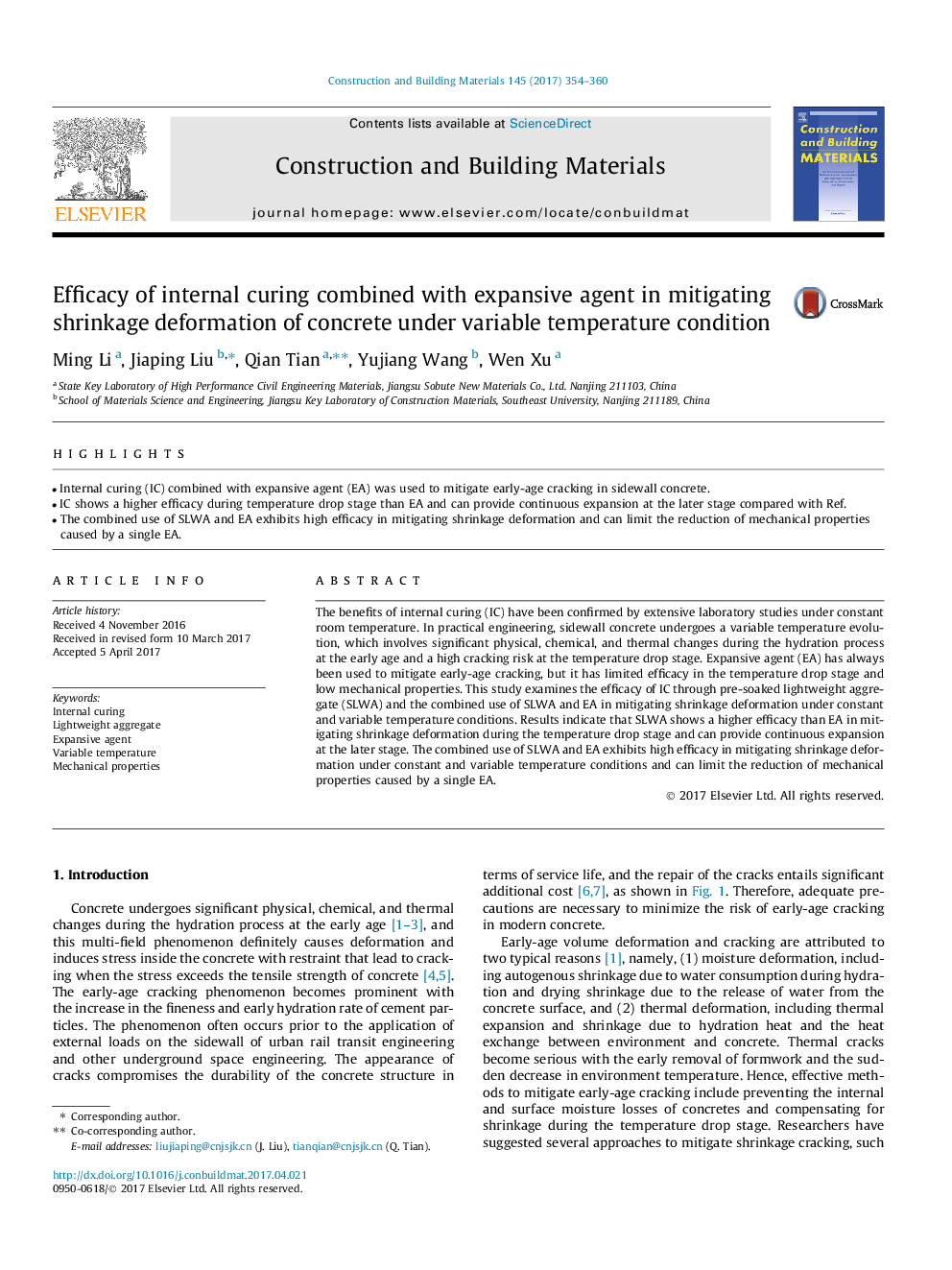| Article ID | Journal | Published Year | Pages | File Type |
|---|---|---|---|---|
| 4918393 | Construction and Building Materials | 2017 | 7 Pages |
Abstract
The benefits of internal curing (IC) have been confirmed by extensive laboratory studies under constant room temperature. In practical engineering, sidewall concrete undergoes a variable temperature evolution, which involves significant physical, chemical, and thermal changes during the hydration process at the early age and a high cracking risk at the temperature drop stage. Expansive agent (EA) has always been used to mitigate early-age cracking, but it has limited efficacy in the temperature drop stage and low mechanical properties. This study examines the efficacy of IC through pre-soaked lightweight aggregate (SLWA) and the combined use of SLWA and EA in mitigating shrinkage deformation under constant and variable temperature conditions. Results indicate that SLWA shows a higher efficacy than EA in mitigating shrinkage deformation during the temperature drop stage and can provide continuous expansion at the later stage. The combined use of SLWA and EA exhibits high efficacy in mitigating shrinkage deformation under constant and variable temperature conditions and can limit the reduction of mechanical properties caused by a single EA.
Keywords
Related Topics
Physical Sciences and Engineering
Engineering
Civil and Structural Engineering
Authors
Ming Li, Jiaping Liu, Qian Tian, Yujiang Wang, Wen Xu,
